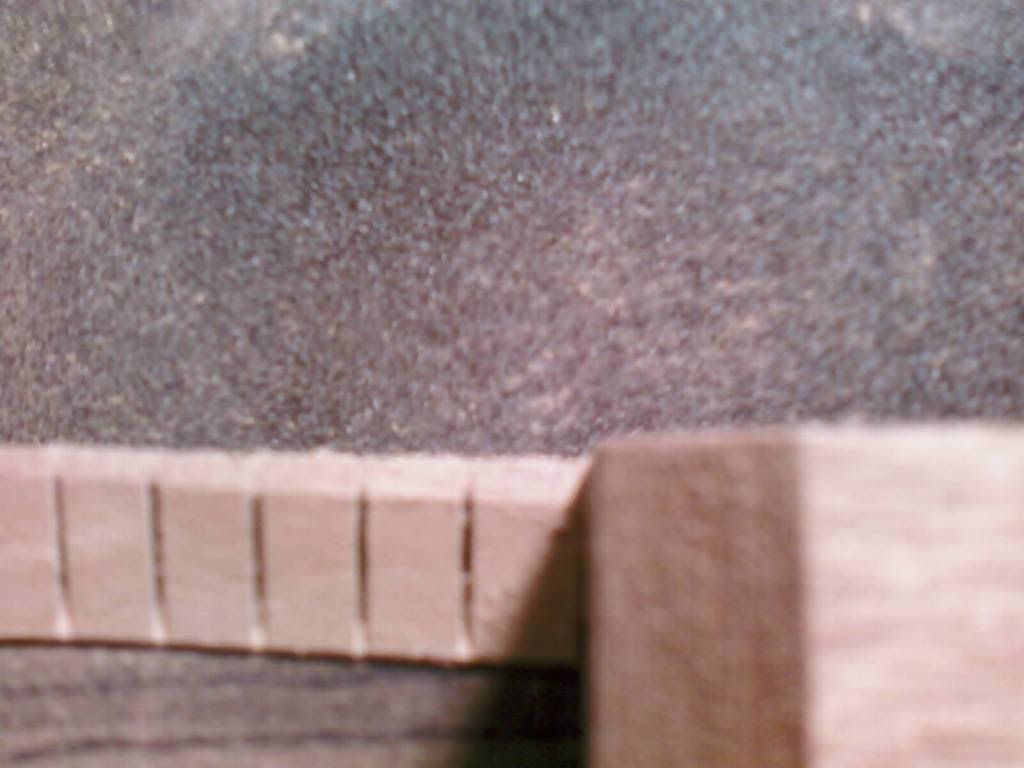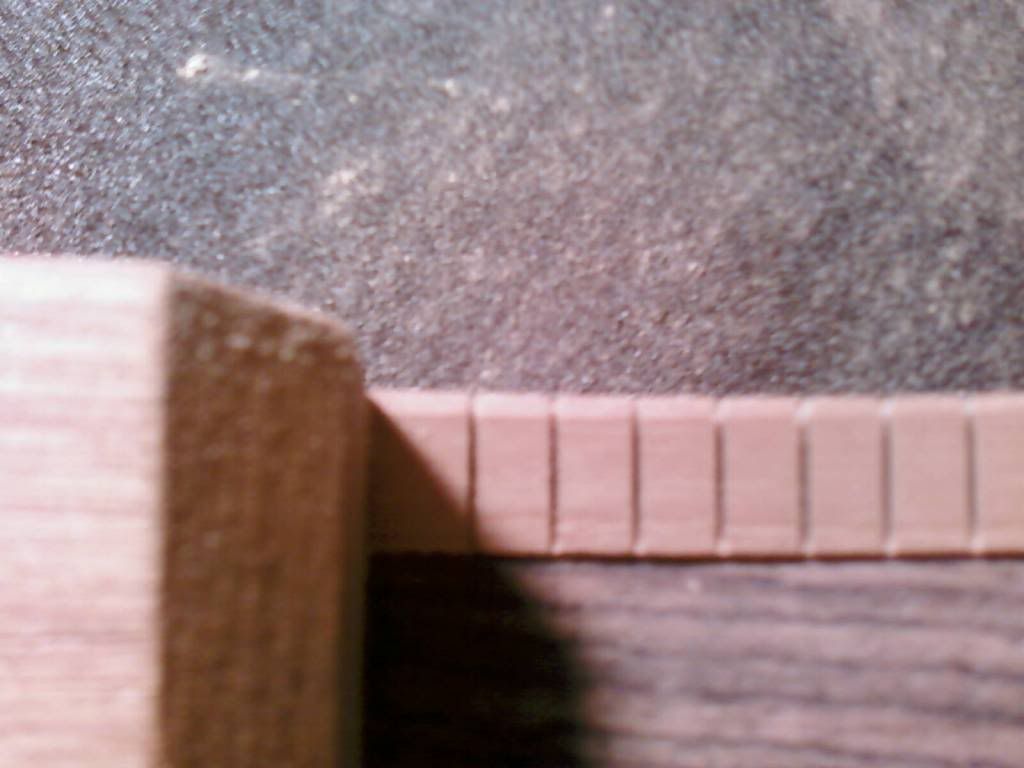Darryl, I don't have a large base to go off of for comparison. My first was radiused all the way, and the last few have all used this technique after reading about it some years ago on the MIMF. I started trying this method after reading a general consensus that it generally gave a more "traditional" tone (however you want to read that....  ) over fully radiused rim. I do know that Huss and Dalton uses this method on their "traditional" series instruments, while they use a radiused rim set on their more contemporary line. That was the first place I heard of it. A good A/B would be to play a H&D DM vs. a TDM and see for yourself. I haven't played a regular DM for comparison, but I do know that the one TDM I played was one hoss of a guitar! Those who have played both tend to describe the DM as more "modern" in tone. Again...... ) over fully radiused rim. I do know that Huss and Dalton uses this method on their "traditional" series instruments, while they use a radiused rim set on their more contemporary line. That was the first place I heard of it. A good A/B would be to play a H&D DM vs. a TDM and see for yourself. I haven't played a regular DM for comparison, but I do know that the one TDM I played was one hoss of a guitar! Those who have played both tend to describe the DM as more "modern" in tone. Again...... 
I can tell you that I am continually getting closer to "that" tone in my head - you know, the one we're all looking for. (Well, OK, so you're not looking for the tone in MY head, but you know what I mean  ) But to use my first (and only) radiused build for comparison wouldn't be fair. The difference between my #1 dread and #2 OM was striking to say the least (the OM just killed the dread!), but I certainly can't say that it was because of any one thing. Since that point, I've been sticking to this basic methodology for my subsequent builds and making smaller tweaks until I build a broader knowledge base. At some point in the future - when I've reached some amount of consistency and repeatability and know what to expect from this bracing - I may branch into other ideas and learn from those as well. Just part of the never ending tone quest, my friend! ) But to use my first (and only) radiused build for comparison wouldn't be fair. The difference between my #1 dread and #2 OM was striking to say the least (the OM just killed the dread!), but I certainly can't say that it was because of any one thing. Since that point, I've been sticking to this basic methodology for my subsequent builds and making smaller tweaks until I build a broader knowledge base. At some point in the future - when I've reached some amount of consistency and repeatability and know what to expect from this bracing - I may branch into other ideas and learn from those as well. Just part of the never ending tone quest, my friend!
As far as the construction, you've pretty well got it. I brace my tops (so far) on 25' and sand my rims flat. When I'm done, I shim the sanding board at the tail somewhat like Hesh shows and take the upper bout down to around the waist area. My upper bout bracing is all flat, BTW. I use a flat UTB and flat A-frame bracing inlet into the neck block. The lower bout is radiused and everything down there stops short of the linings. So you could say the top is "sprung", I suppose, but it's a very small amount.
I guess it's another one of those things that you don't know WHY it works, it just does. At least to the ever-subjective satisfaction of many. You would expect it to somewhat stiffen the perimeter of the soundboard, if anything, when many are trying to loosen that area. Of course, it could be said that by stopping all my braces short of the linings the perimeter is already looser.
Never measured the final dome of the top after bracing, but I can't see where it would be changed much. The soundboard bracing should maintain the shape pretty well and only the perimeter is "stressed", so to speak.
|



